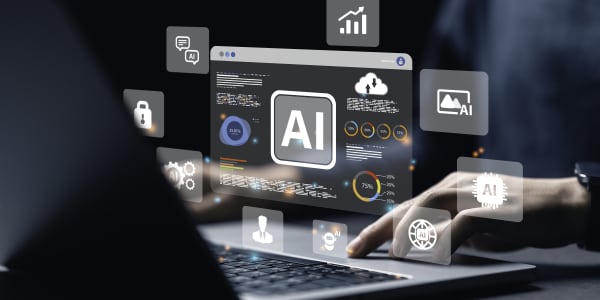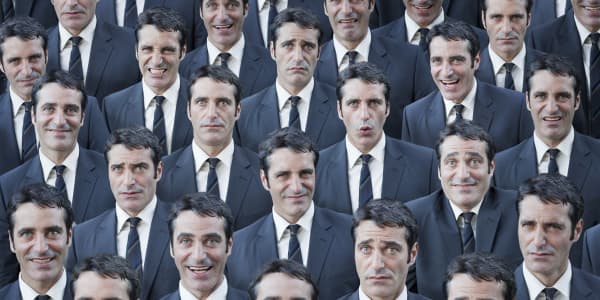As the world waits for a Covid-19 vaccine, some doctors and scientists have been looking for other methods of slowing its spread or eradicating it. One of them is Fred Maxik, a former NASA scientist and the founder and chief scientific officer of Healthe. His company has developed what it claims is the first-ever human-safe Far-UVC technology to combat coronavirus.
Far-UVC is a form of ultraviolet light, and at specific frequencies, ultraviolet light has been known to cause such harmful side effects as skin cancer and blindness. However, an April 21 Columbia University study showed that Far-UVC's narrow band of wavelengths — approximately 207–222 nanometers (nm) — is short enough to prevent it from damaging living human cells. But it can still penetrate and kill small viruses and bacteria on surfaces and in the air.
Maxik said that the idea is for this technology to be deployed in the places where healthcare providers tend to the sick. For example, Far-UVC light could radiate from doorways and decontaminate the hair, skin and clothes of those entering a building, whether they know they're carrying the virus or not.
"If nurses and doctors passed through a portal archway as they enter or leave a unit like intensive care, it would drastically reduce the chance they bring coronavirus or other germs in on their clothes, skin or whatever they're carrying," he explained. "Importantly, it would also drastically reduce the chance they take any pathogens home with them at the end of the day."
He added that this technology could also be deployed in a variety of ways and locations.
"We also have Far-UVC downlights, which can replace standard recessed lights to provide surface and air sanitation on an ongoing basis," he said. "Installing these in hospitals, nursing homes, or other health care facilities would fight surface and airborne contamination whenever the lights are on, as opposed to whenever someone gets around to spraying or wiping disinfectant on the surfaces."
More from Technology Executive Council:
Software thinks its revenue is crisis-proof. This time may be different
Google, Facebook, Twitter team up yo support addiction recovery during pandemic
Vet telehealth surges as first US pets test positive for coronavirus
Columbia University is not the only institution to find that Far-UVC light is safe for human beings to use. A joint study between Kobe University in Japan and Ushio, Inc. found that "repeated irradiation of 222nm ultraviolet radiation (UV-C) with high disinfection power does not cause skin cancer, suggesting its safety on human skin and eyes."
Another study, from the National Center for Biotechnology Information, found that "far-UVC light (207-222 nm) efficiently inactivates bacteria without harm to exposed mammalian skin… Continuous very low dose-rate Far-UVC light in indoor public locations is a promising, safe, and inexpensive tool to reduce the spread of airborne-mediated microbial diseases."
Jose Morey, M.D., Chief Medical Innovation Officer for Liberty BioSecurity and advisor for MIT Solve and NASA iTech, said that while Far-UVC technology shows a lot of promise, it's not quite ready for prime time just yet.
"The angle and duration of the exposure are still yet to be determined," he said. "The exposures to date have been controlled, and [there have been] mixed results depending on the type of surface, fabric, and curvatures. The concept is similar to the [World Health Organization] standards for disinfecting water in underdeveloped environments and other traditional UV mitigations… There is a lot of promise here, but still many questions."
The science behind the technology
While the scientific consensus is that ultraviolet light at this wavelength is safe, wavelengths above 222nm can have a variety of effects on human beings, not all of which are necessarily bad.
"We know, for example, that UV light triggers our bodies to produce vitamin D, and has a significant impact on our circadian rhythms, or sleep cycles," Maxik said. "But long-term exposure can result in harm ranging from sunburn and cataracts to skin cancer and blindness. That's why we wear sunscreen outdoors and avoid looking directly at the sun, for example."
Maxik said that discussions have been in place with multiple government agencies to develop this technology for use in the U.S. healthcare system, although he declined to say which ones. But while he stressed that Far-UVC is not a cure for coronavirus, its proper use will do a lot to slow it down. He also said that it could be a powerful tool against other maladies that might be on the horizon.
"This is not just about coronavirus," he said. "Far-UVC is effective against all kinds of microbes, and represents a significant step in protecting people from more routine viruses, such as influenza or the common cold, as well as bacteria such as E. coli, and Staphylococcus, and molds, now and in the future."






